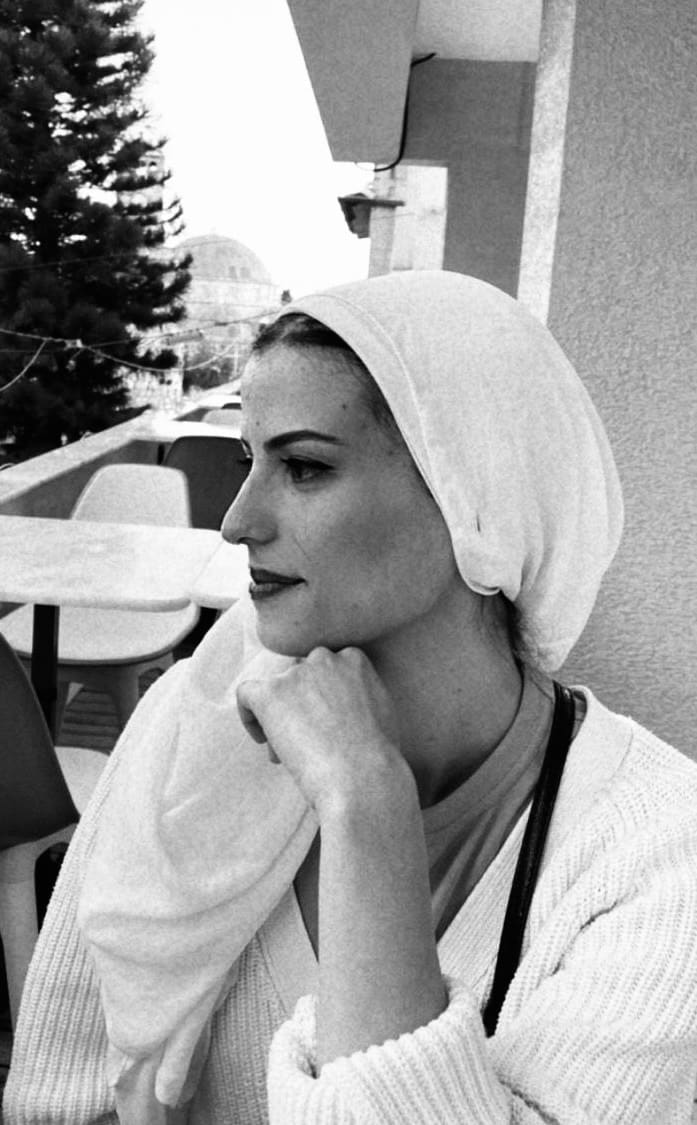Like the Little Prince by Saint-Exupéry, Little Cardboard Man is just a boy. Yet this orphan, abandoned by his family, neglected by the Congolese State and forgotten by society, dreams of entering the light. To be seen, observed, and recognized. So he makes himself an integral shell, which inevitably draws people’s attention to him, with the only material he can collect: dumped cardboard. He covers himself from head to toe with cardboard, transforming to reach his metamorphosis: Peguy Dioko becomes Little Cardboard Man, a superhero admired by all in the streets of Kinshasa.
The orphan, a Grendizer robot made out of paper, is no longer alone: he has become a renowned artist for his sense of detail. He, like many others, caught the eye of the photographer Stephan Gladieu, who collected their portraits for his latest project: born out of societal despair, Homo Detritus sounds the alarm in colors, raising awareness about our consumption patterns.
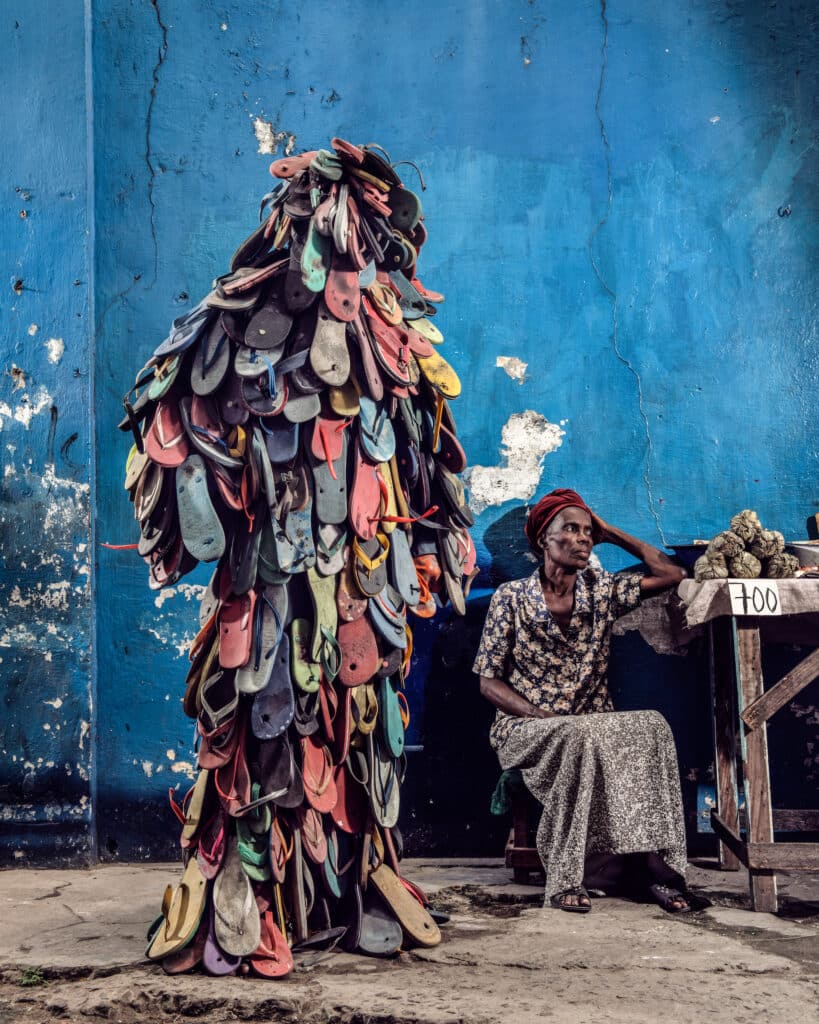
“I Create to Be”
“I created something; therefore, I am,” responds the boy to Stephan Gladieu. For the invisible people of Kinshasa, Descartes was wrong: to think in order to be is not enough. To “be” in society, you must think and be recognized by your peers. “Why did you do it?” asks the photographer from the Little Cardboard Man. “Because by doing it, I am. Then, people on the streets will look at me differently.”
Little Cardboard Man’s story is not unique. In 2021, almost 64% of the population of the Democratic Republic of Congo, the second largest country in Africa, lived on less than $2 a day. According to the Human Capital Index, which assesses children’s healthcare and education for professional achievement and future contribution to the country, a Congolese child born in Kinshasa today could realize only 37% of his/her potential. In comparison, the HCI estimate in Europe is between 77.12% in Norway and 58.22% in Albania.
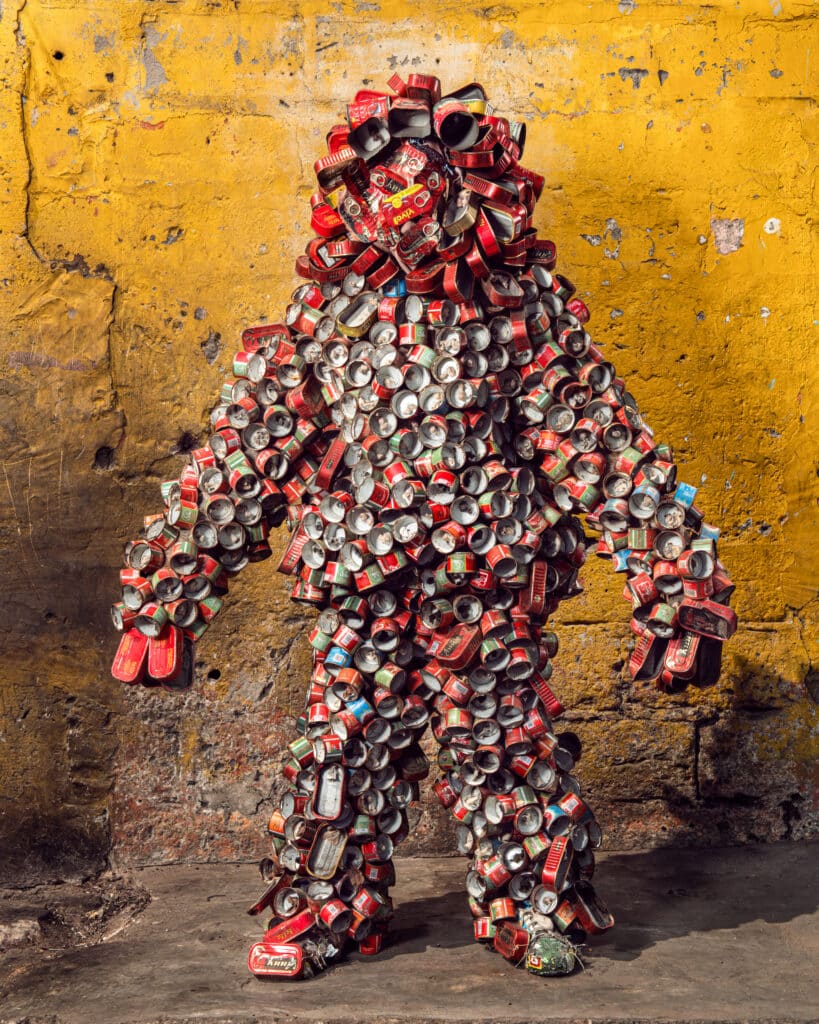
That lack of resources urged the plastician Eddy Ekete Mombesa to found the collective “Ndaku ya la vie est belle,” literally “House of life is beautiful,” in 2018, a community that brings together nearly 25 artists. It comprises former students of the Academy of Fine Arts in Kinshasa, street orphans, young traumatized veterans, and young girls accused of witchcraft and forced to leave their village…
In his book Homo Detritus, Stephan Gladieu says: “They all cry out their urgency to live and no longer having to survive in litter and the injustices of the world.” When they wear their masks, they become superheroes. Batman can eternalize in Gotham City because, in the DRC, it is the Tin-Man who watches over the city.
The society’s fallen promise to fight against insecurity in their streets. The Electric Woman, with her wired costume, denounces the corruption of electricity suppliers – only a few hours of energy are supplied each day – and the absence of street lighting at dusk. Pitch darkness that multiplies kidnappings, assaults and rapes. Litter Avengers come together as super-visible superheroes to protect their citizens, so they never fall back into the emptiness of social non-existence.
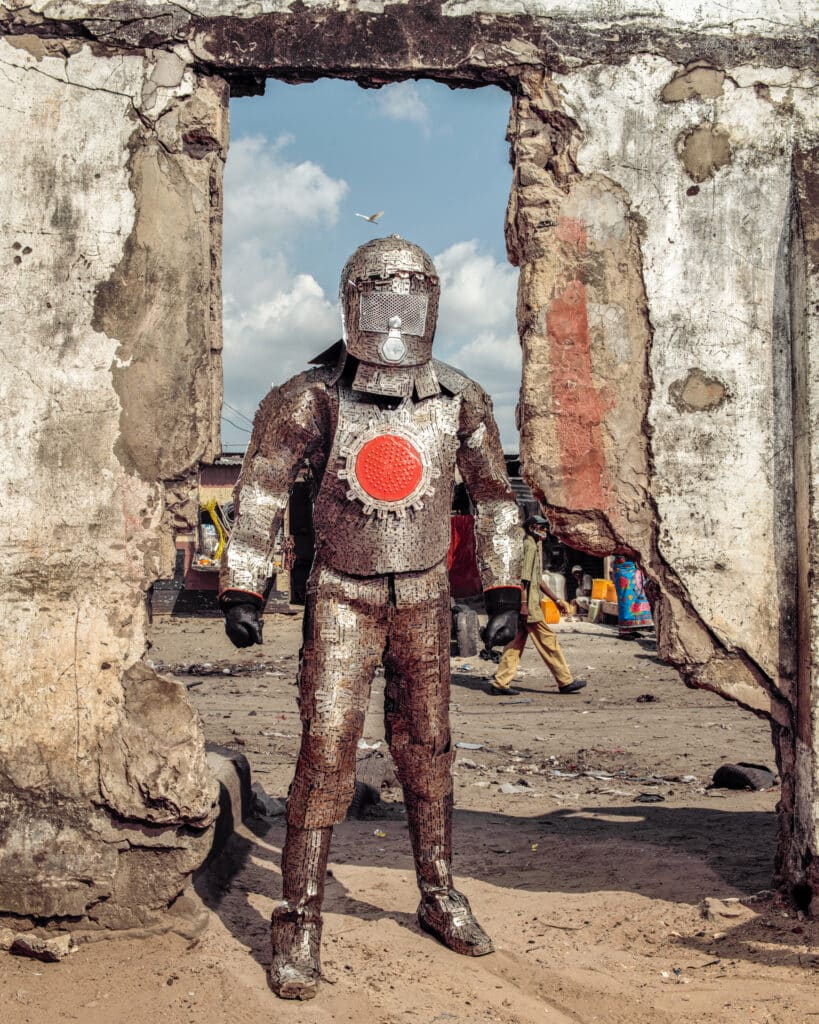
Traditional And Timeless Masks
Sapology is a clothing culture of dressing elegantly in bright, flashy colors. The ideology of the Society of Ambiance-Makers and Elegant People (La Sape) has been rooted in Congolese society since the 1920s, and it has spread across the continent. Outfits like the fluorescent green three-piece suit, purple tie and polished shoes inspire respect in the wearer. It was in the mid-1960s, after the independence of the DRC, that the emblematic musician Papa Wemba brought forth this philosophy, opposing the policy of President Mobutu. The latter declared all Western outfits symbols of colonization and prohibited wearing them, hoping to strengthen Congolese traditions.
The struggle between societal conventions and importing a new Western fashion perpetuated even at the spiritual level. Historically, in the ancestral animist traditions of Africa, it is necessary to wear a full face mask to present a spirit during religious ceremonies. These traditional adornments, much less widespread following the spread of Christianity, are made from bark, tree leaves, lianas, raffia palm…
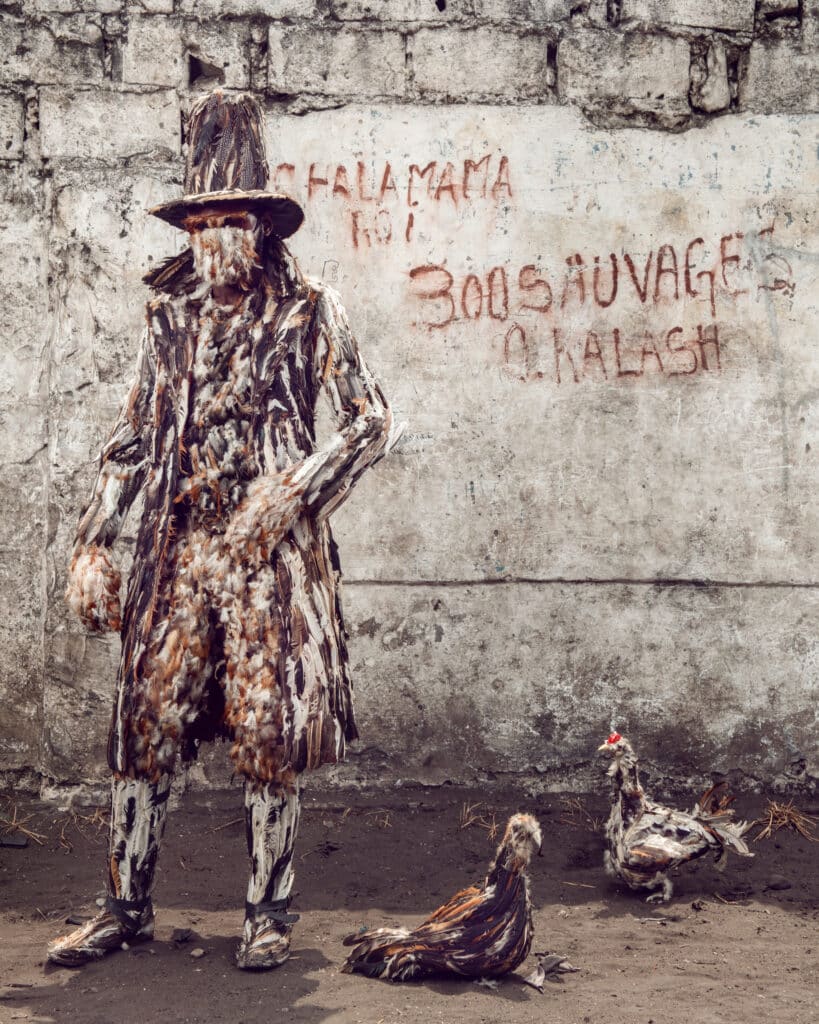
The legacy of a one-time spirituality anchored in the continent’s DNA fascinates Stephan Gladieu. The French photographer’s adventure thus begins with an encounter. He discovers the blurred and pixelated photo of a woman, Sarah N’dele, on Facebook, dressed in brightly colored bottles of household products, her face hidden behind a plastic mask, posing in front of a grocery store in shades of blue. The photographer is amazed. He contacts Sarah N’dele, and the Homo Detritus project cascades: he meets with the “Ndaku ya, la vie est belle” collective, its founder Eddy Ekete and lands in Kinshasa to follow their movement.
Today, nature in Kinshasa is dying. The city is no longer beautiful; it is covered with waste. Yet despite everything, the Kinshasa artists reappropriate nature like their ancestors by borrowing the color codes of the sapologists: “They are a bit like ghosts finally stepping out of these neighborhoods, covered in our waste. At the same time, they reinterpret the animist mask that we, colonists, tried to destroy,” explains Stephan Gladieu. At a time of climatic upheaval, the photographer’s project becomes the voice of Mr. Megot, the Electric Woman, Little Cardboard Man and others, crying out in despair in the face of waste and slums.
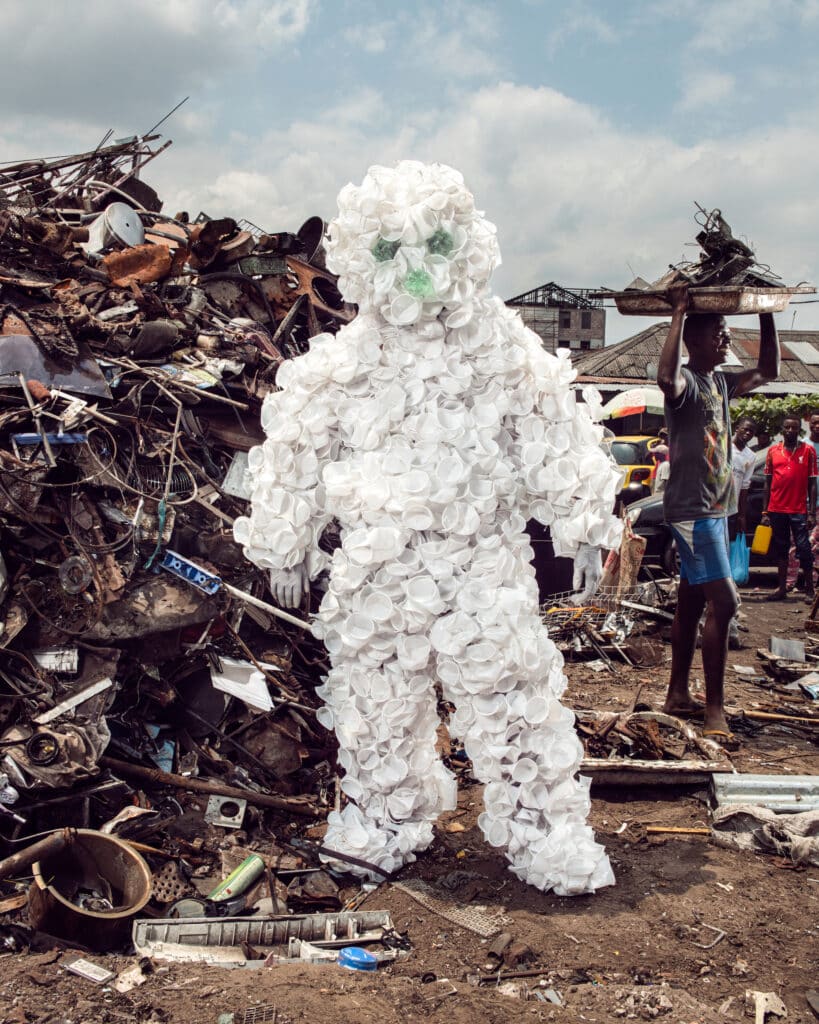
The Best Is Yet to Come
Despite being one of the world’s richest resources of cobalt, coltan, diamonds, gold and oil, the Democratic Republic of Congo remains the 8th poorest country on the planet. Unable to benefit from their resources, the Congolese are forced to accept waste from the Western world in exchange for financial aid. Stephan Gladieu illustrates the consequences of global overconsumption.
Born out of societal despair, Homo Detritus sounds the alarm in colors to raise awareness about our consumption patterns. It encourages the urgency to unite for an ecological strategy in the West. Stephan Gladieu refuses to produce a miserabilist series to denounce the country’s state and prefers to restore the dignity of each photographed person–a poetic way to draw attention with a touch of humor. The photographer’s position stays the same: he represents societies he visits through their inhabitants without turning them into symbols.
Novelist Wilfried N’Sondé describes the Congolese collective project as “the alliance of litter and poverty, with a lot of disdain and vast despair, generating an artistic adventure that maintains the infinite cycle of life, of resilience, of perpetual regrowth.” The strength of the Congolese people appears when the Homo Detritus wander in the streets of Kinshasa with their swaying steps, denouncing the ecological disaster with their costumes, to the rhythm of drums. A resilience rediscovered since Papa Wemba’s La vie est belle.
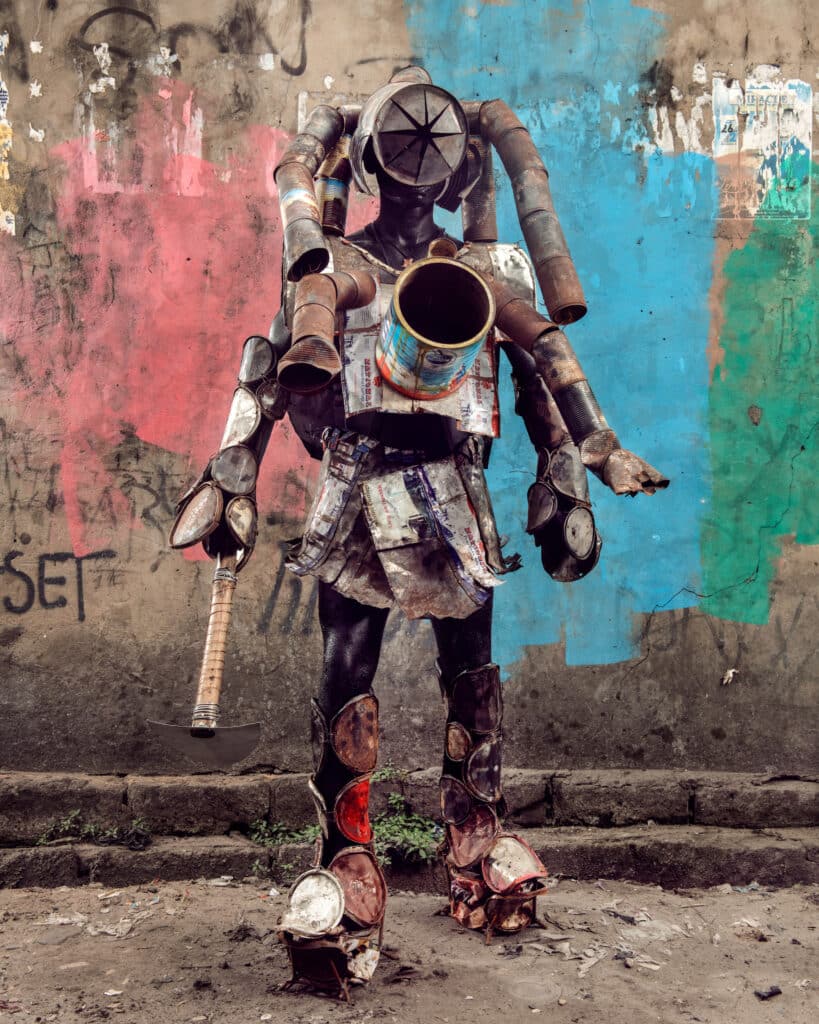
Homo Detritus, Stephan Gladieu & Wilfried N’Sondé, Actes Sud 2022, at 32€.

